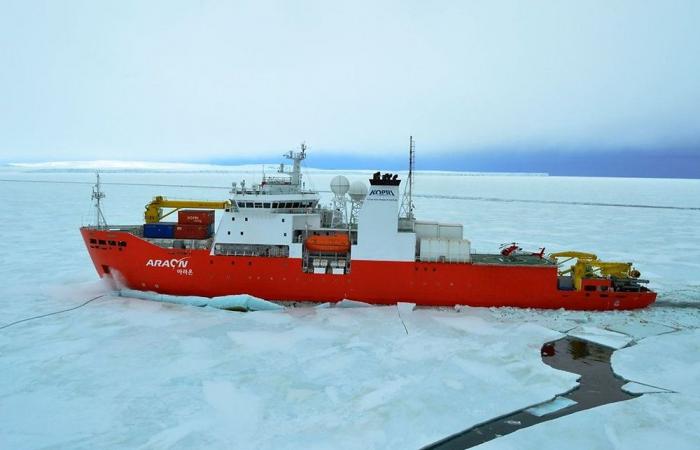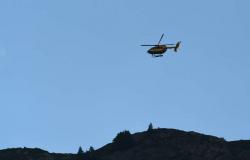The discovery of ice at the bottom of the Beaufort Sea deepens our knowledge of the dynamism of the seabed and the durability of the infrastructure built there.
Knowledge of underwater permafrost is relatively recent and poorly developed. It is only since the mid-1970s that its existence has been proven, notably thanks to the work of John Ross Mackay and the Geological Survey of Canada.
“In the Beaufort Sea, the thickness of permafrost reaches 700 meters in certain cases,” notes a researcher from this organization, Mathieu Duchesne.
Later, successive mappings of the same sites in the Beaufort Sea, from 2010 to 2019, made it possible to realize that this permafrost, like that on the continent, is subject to climate change and is melting.
“We realized that there were enormous depressions forming on the seabed at the edge of the continental shelf,” explains the Quebec researcher, “holes into which we could fit several times the size of the Canadian parliament. […] The appearance of these depressions leads us to believe that this environment is much more dynamic than we thought, that the degradation of permafrost is occurring more quickly than we thought. »
“That’s when the discovery was made,” emphasizes Mathieu Duchesne, who has been leading the research project for five years.
“This has never been observed anywhere else in the world until now. We saw, for the first time, layers of ice outcropping on the side of these depressions. And we are talking here about almost pure ice, unlike permafrost. [terrestre, NDLR] with its grains of sand or soil connected by ice. »
This ice, explains the scientist, is found on and under the seabed and is dissected into several layers that can be one meter thick, sometimes separated by sediments. The current hypothesis is that these layers extend up to ten kilometers from the depressions.
During the passage of the icebreaker Araon through the Beaufort Sea in 2022, scientists found that depressions in the seabed had deepened by 30 meters in just three years. This transformation, combined with the presence of layers of ice, has an impact on human activity, underlines Mathieu Duchesne, giving the example of European initiatives to connect fiber optic telecommunications cables to northern communities. “The cables would be placed on the seabed,” explains the researcher. But it must be ensured that it has the bearing capacity for several decades so as not to damage the cables. Now we add the presence of these layers of ice. Is this good news? Will we have a better bearing capacity of the seabed or with the warming of the oceans will this risk making the seabed even more sensitive? »
Mathieu J. Duchesne scientific researcher in geophysics at the Geological Survey of Canada. (Courtesy)
If we had to wait before making the discovery public, it was because we had to take the time to interpret it and confront the researchers’ hypotheses. A presentation was made to the American geophysical union in December 2023. A paper was submitted to the Journal of geophysical research but several questions remain unanswered today. It is unknown why the fresh water from the permafrost has not mixed with the salt water of the sea, why it is free of mud, as well as the chronology of the phenomenon, e.g. ice layers are added or diminished with time.
“There are still a lot of questions to be clarified,” concedes Mathieu Duchesne. I can’t understand why there are no soil particles in the ice… These ice layers were formed between now and several thousand years ago, but when exactly? »
Dating must be made from ice samples already brought back to the laboratory. Another mission is planned in the Beaufort Sea in 2025 to collect additional data.
“We also want to understand the spatial distribution [de la glace sous-marine], specifies Mathieu Duchesne. Is it just in one specific location, which is the continental shelf of the Beaufort Sea, is it more widespread? We can assume that there are seabed textures a little further away, towards Banks Island. We plan to explore this region. »
Underwater permafrost is also found near Labrador and Alaska. Dissemination of the work of the American-Canadian-Korean consortium could stimulate other scientists to join the research and contribute new technologies.
Missions in the Arctic are very expensive, recalls Mr. Duchesne. “It’s a hostile, remote environment. Two weeks of boat time costs US$2.5 million. »






